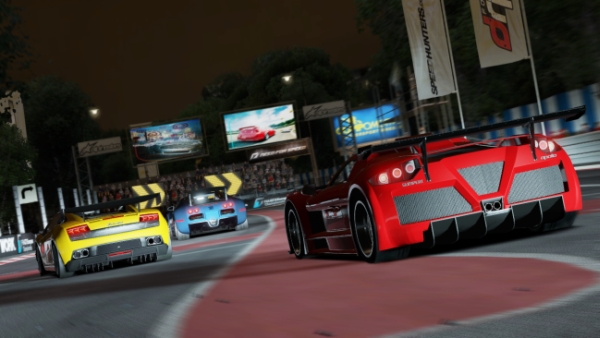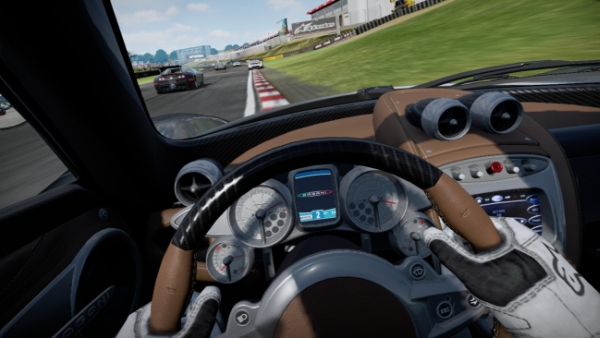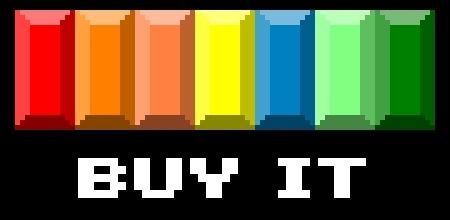
It might be difficult to believe, but Need For Speed began as a racing sim. While the franchise might be known for high-speed police chases, loose physics, cheesy stories, and the immortal Razor Callahan, the original game (for the 3DO, no less) was a realistic take on driving a car at high speeds. While EA attempted to return NFS to its roots once before – 2007’s Need For Speed: Pro Street was something that could be described as a racing sim – 2009’s Need For Speed: Shift was the first time they’d really tackled the genre in such a forceful manner. The result was a game that couldn’t quite hang with Gran Turismo or Forza Motorsport, but managed to carve a niche that wasn’t really around – a realistic racer that wasn’t bogged down in endless menus and needless complexities. It was something to build upon, and with Shift 2: Unleashed, they’re doing just that.
Platform: PC, PS3, Xbox 360 (Version Played)
Publisher: Electronic Arts
Developer: Slightly Mad Studios
Genre: Survival Horror Racing
Release Date: March 29, 2011
ESRB Rating: Everyone 10+
Shift 2’s career goal is to reach and win the FIA GT1 world championship. That’s it. There’s no ridiculous plot devices, no oddball C-list actors, and no cheesy gimmicks. It’s purely a straight-up racing game with a simple progression system. Like the original Shift, the game takes you to some of the world’s best race tracks: Spa, Nurburgring, Laguna Seca, Monza, and Road America, for starters. In addition, there’s also a wide variety of original city circuits such as Miami, Shanghai, and London. The vehicle selection is vastly expanded from the first game, but at the same time it manages to avoid drowning players in irrelevant cars; you get the best of the best here. It all adds up to what’s a very no-nonsense racer – the whole thing feels raw and traditional… and I mean that in a good way.
Like last year’s Need For Speed: Hot Pursuit, Shift 2 uses the Autolog hub. For newcomers, Autolog is your all-in-one source for sharing in-game photos and keeping track of your various statistics against your friends. It’s also your ticket for keeping track of your progress; it’s where you find out what tracks you’ve mastered, what badges you’ve unlocked, and what events could be played with the vehicles you own. In truth, I barely paid attention to Autolog in Hot Pursuit, but in Shift 2, there’s been times when I’ve meticulously ran through my stats to see how far I was to completing something. It’s good to see the concept put to solid use – hopefully future NFS games will use it just as well.
Shift 2’s racing action can best be described as… demanding. It seems obvious in a game that attempts to recreate the experience of racing a car, but Shift 2 has this uncanny ability to make the process completely terrifying. The game captures the sensation of speed incredibly well; sometimes the cars can get so fast that it almost feels like you’ve lost all control – like the vehicle has become a sentient being. Of course, that’s when you slam on the brakes to regain control… or screw up and smash your front end in after hitting a wall at a couple hundred miles an hour. This is especially tricky during the new night races, where you’re racing in almost complete darkness with only your headlights to guide the way. If those get destroyed, then you’re screwed. This is no more apparent than at Nurburgring – the night races there are among some of the most challenging in the game.

Shift 2 also features drifting, like almost every NFS has since the days of Need For Speed: Underground. In this case, you’re alone on the track with three scores to beat if you want first place. There are no heats this time – instead you’re given a set amount of laps to get the highest score in a single run. Rather than bog the action down with gimmicks, the drifting in Shift 2 is very simple: turn your car sideways and fly around corners in said sideways position. The challenge comes from mastering every corner and chaining drifts – the very last drift race practically requires you to chain one continuous drift without messing up. It can be brutally difficult. The only downer is there’s just not enough of it; once you finish the ten drifting events early in the game, it never appears again. Bummer. At least you can take it online and compete with others to keep the drifting fun going.
One of my favorite aspects of the original Shift was the “track mastery” goals spread about all the courses. In short, mastering a track means rounding every corner or chicane perfectly by following the correct racing line. You don’t have to pull it off in a single race – it carries over to other events at the track. It’s kind of a meta-game; as you race your opponents, you also race against the track. Mastering every corner doesn’t net you anything more than a badge to show off, but the challenge of completely dominating a course is quite satisfying. Each race also has some optional objectives that reward experience points – usually for beating a lap time, completing a lap cleanly, or holding first place for… you guessed it, a lap. These aren’t as vital as they were in Shift 1, but the experience they dole out can help level up and unlock new stuff.
While new players will neither notice nor care, veteran Shift players should be aware that Shift 2 doesn’t feel a whole lot different from its predecessor – even the visuals seem untouched aside from some minor touch-ups. Perhaps it’s naive to expect massive changes considering the year and a half turnaround between games, but there’s not much new here aside from the larger track selection and the addition of night racing. Though Shift 2 is still a high-quality racer, it feels a lot more like an expansion to an already existing product than a fresh new game. Personally I don’t mind the “expanded and enhanced” feel, but others might find the lack of innovation to be unfortunate. Newcomers though, wow – you’re in for a treat. There’s an absolute learning curve to making the most out of the tricky handling and intense races.

The game is not without issues, though they tend to be forgivable. For the most part the AI of the computer-controlled drivers put up a good fight, but they tend to follow the same kind of generic patterns that other racing games contain. This makes some races an exercise in annoyance, especially on tight tracks. For a game that emphasizes the art of the pass, dealing with wonky AI that barely even knows you’re there can be a hassle, resulting in accidents that usually lead to a manual restart. When you do start making contact with them, expect to lose badly every time. I don’t know if it’s a collision bug or not, but it’s possible to get locked up with a rival car and railroaded off the track – even with barely noticeable contact. It’s kind of funny, considering Shift 1 had some of the craziest physics around – it was possible to rear-end a dude and “coerce” them to take flight while you power through underneath. Also, Shift 2 features some of the most aggravating engine effects ever. To say they’re abrasive to the ears is an understatement. It’s as if they recorded them with the worst microphones in the universe.
Ultimately, Shift 2: Unleashed can best be described as a racing sim for people who don’t have the time or patience for Gran Turismo or Forza. It features all the intense, complex aspects of auto racing, just without endless menus or boring cars. At the same time there’s enough meat and variety for veterans of the genre – and even they might appreciate the streamlined approach. Though not a huge evolution from the original game, Shift 2 is best considered a natural enhancement of what was started back in 2009. As the Need For Speed series continues its return to relevancy, Shift 2: Unleashed has staked its claim as one of the cornerstones of its resurrection.

Review Disclosure: A retail copy of Shift 2: Unleashed was purchased by Warp Zoned for the purposes of this review.







